
[330] Symphoricarpos albus, Snowberry
Symphoricarpos orbiculatus, Coralberry
Introduction
Symphoricarpos albus, Snowberry, and Symphoricarpos orbiculatus, Coralberry, are two very similar garden plants usually grown as hedges for their attractive fruits. The Snowberry produces berries coloured snow-white, while those of the Coralberry are a coral pink colour.
Other species of Symphoricarpos are called Snowberry, as are species from two other completely unrelated genera.
Taxonomy
Kingdom – Plants
Division – Vascular Plants
Class – Angiosperms (Flowering Plants)
Order – Dipsacales
Family – Caprifoliaceae
Subfamily – Caprifolioideae
Genus – Symphoricarpos
Scientific Names – Symphoricarpos albus, Symphoricarpos orbiculatus
Name
Ancient Greek symphorein-karpos means ‘bearing together fruit’ from the closely packed fruits.
The Latin albus means white. Orbiculatus is a diminutive form derived from orbis, meaning round or circular.
The common names are self-evident.
Description
There are about fifteen species of Symphoricarpos, all coming from North and Central America (except for Symphoricarpos sinensis, found in western China.)
Symphoricarpos alba is a small deciduous shrub that has naturalized in Britain. It can spread as a dense thicket and makes a good hedge plant.
It has red stems, lots of insignificant green leaves and very small pink flowers but it is only really noticed for its fruits. They are pure white berries with a diameter of about a centimetre, formed in bunches, and they may persist through the winter.



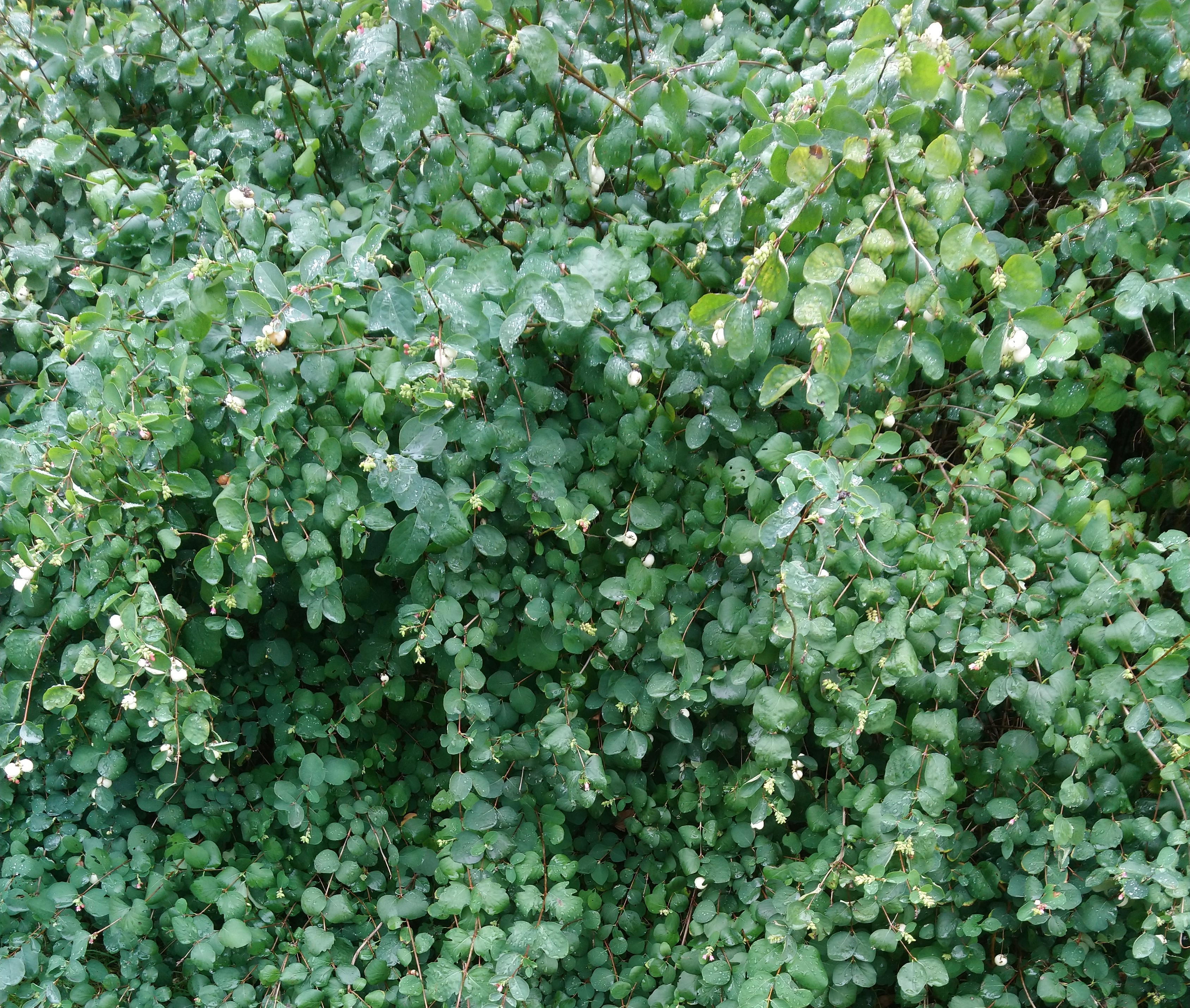



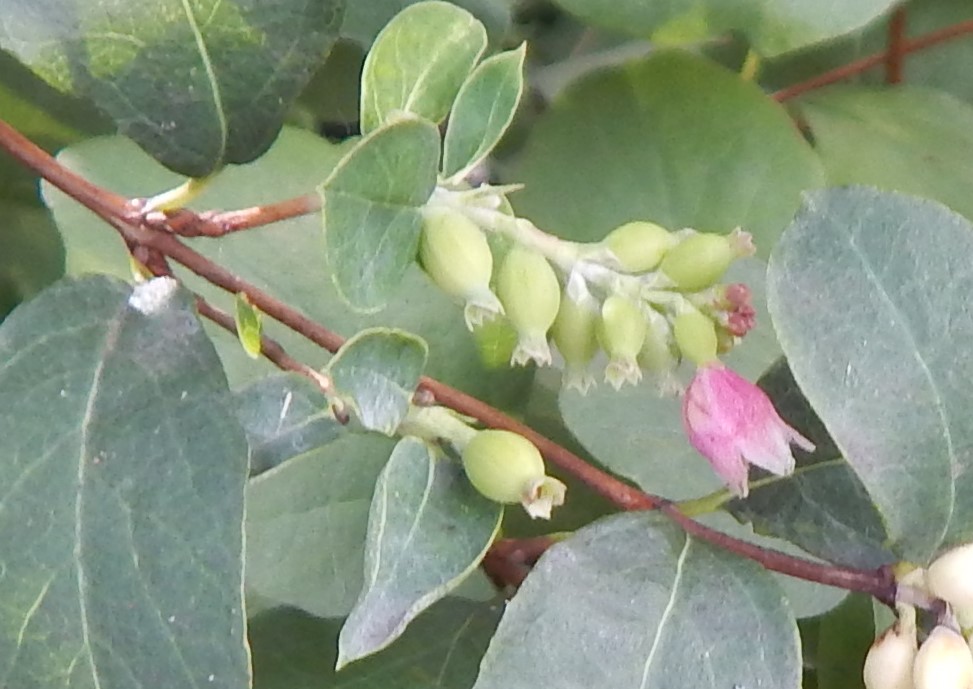

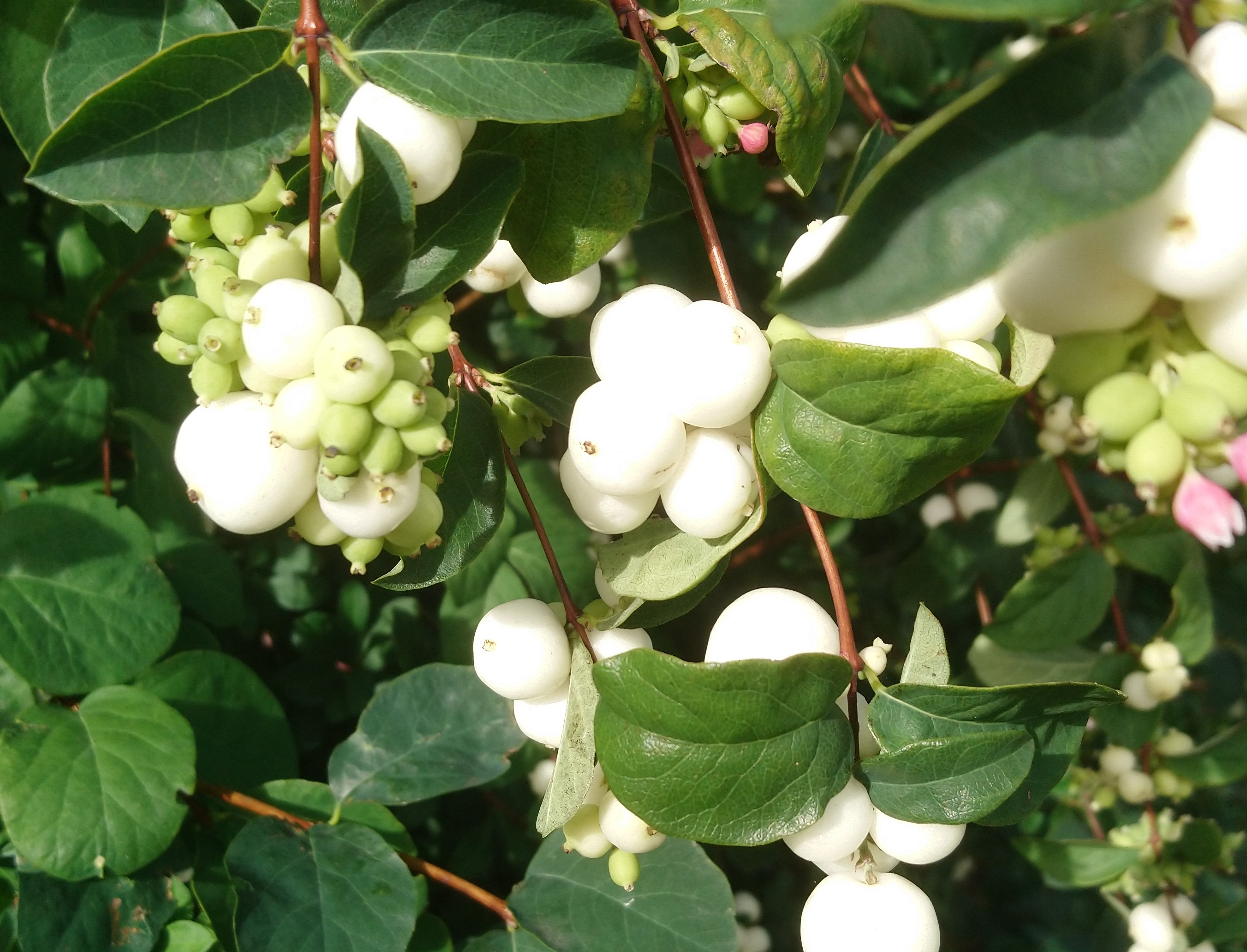
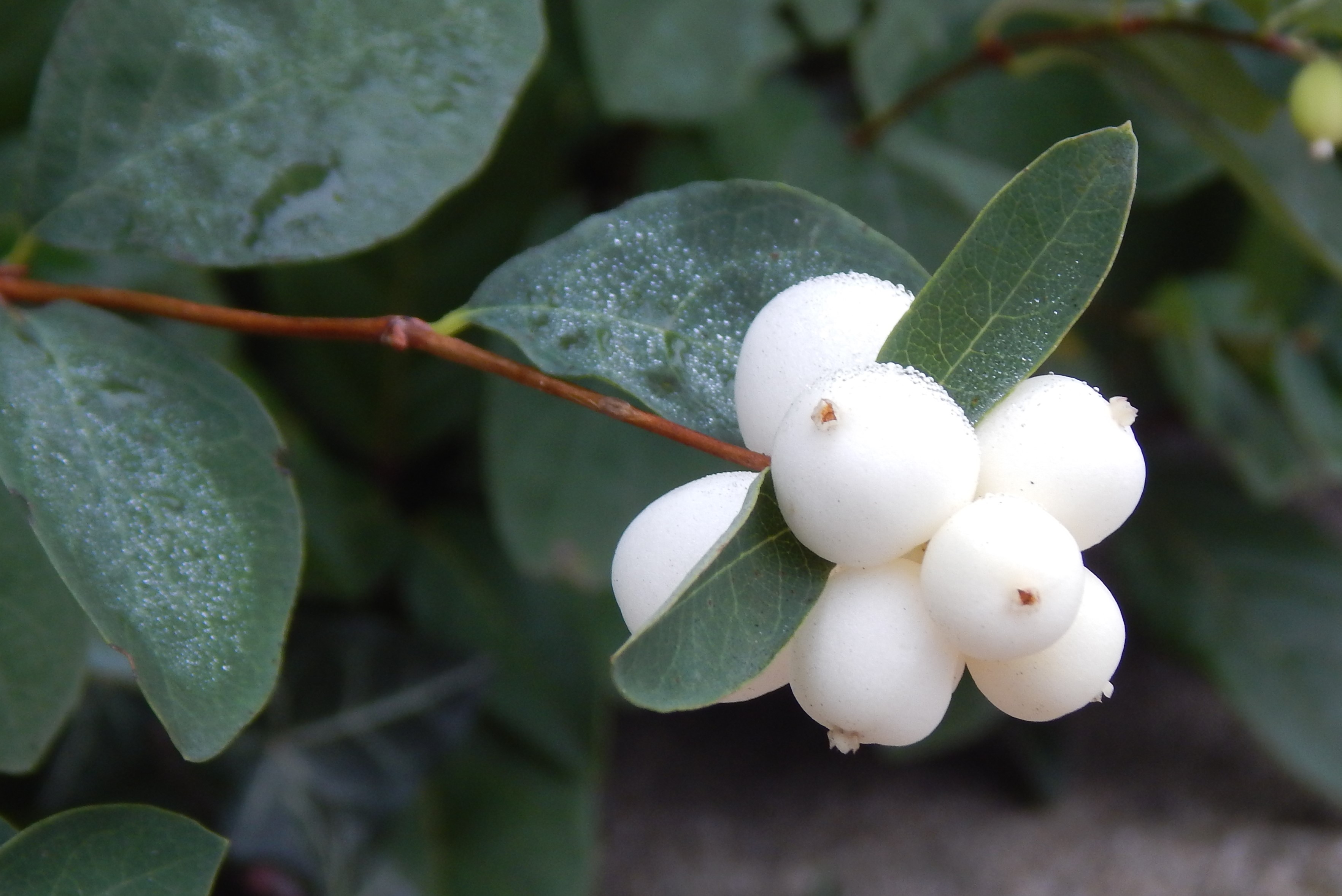
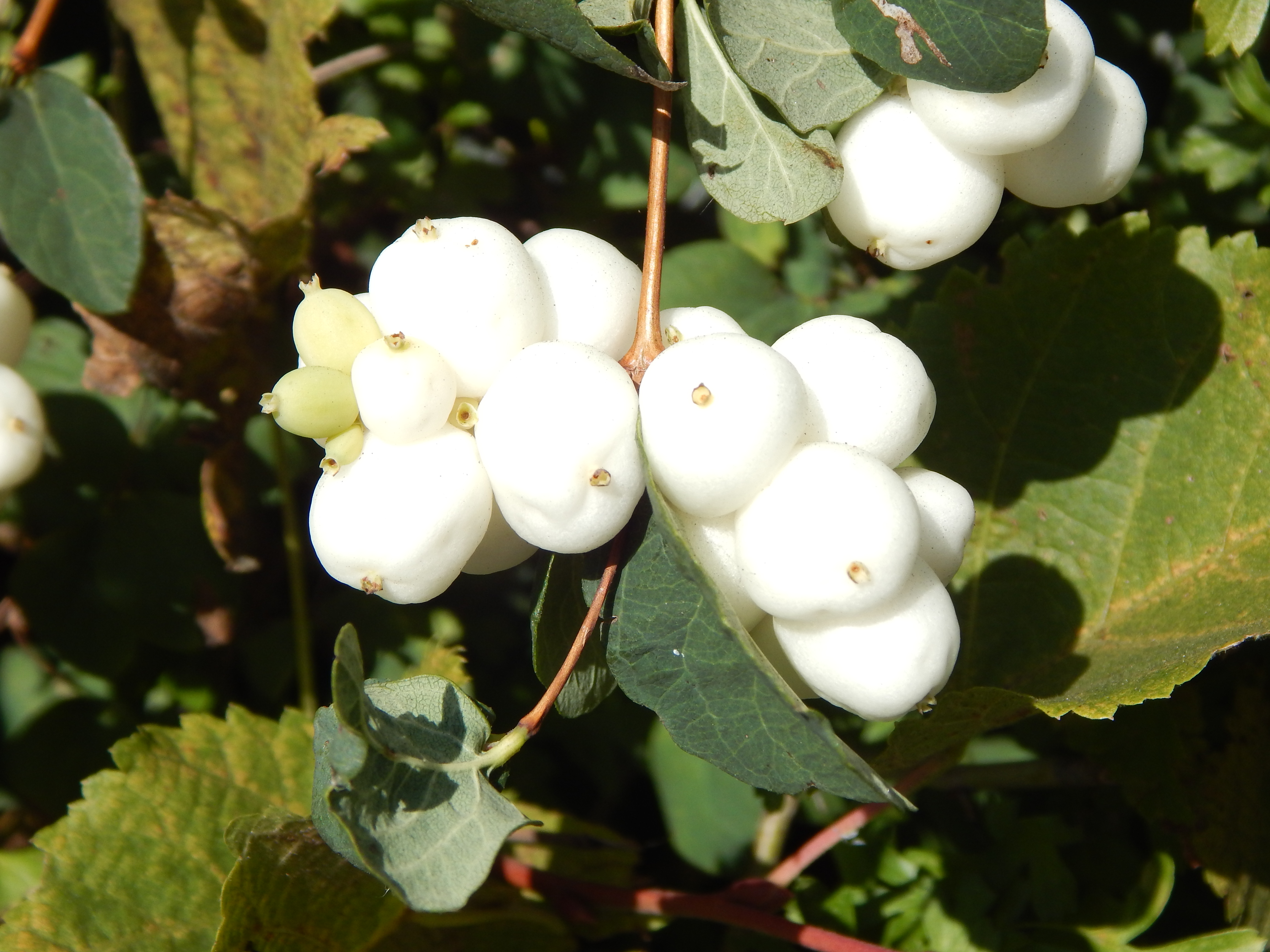

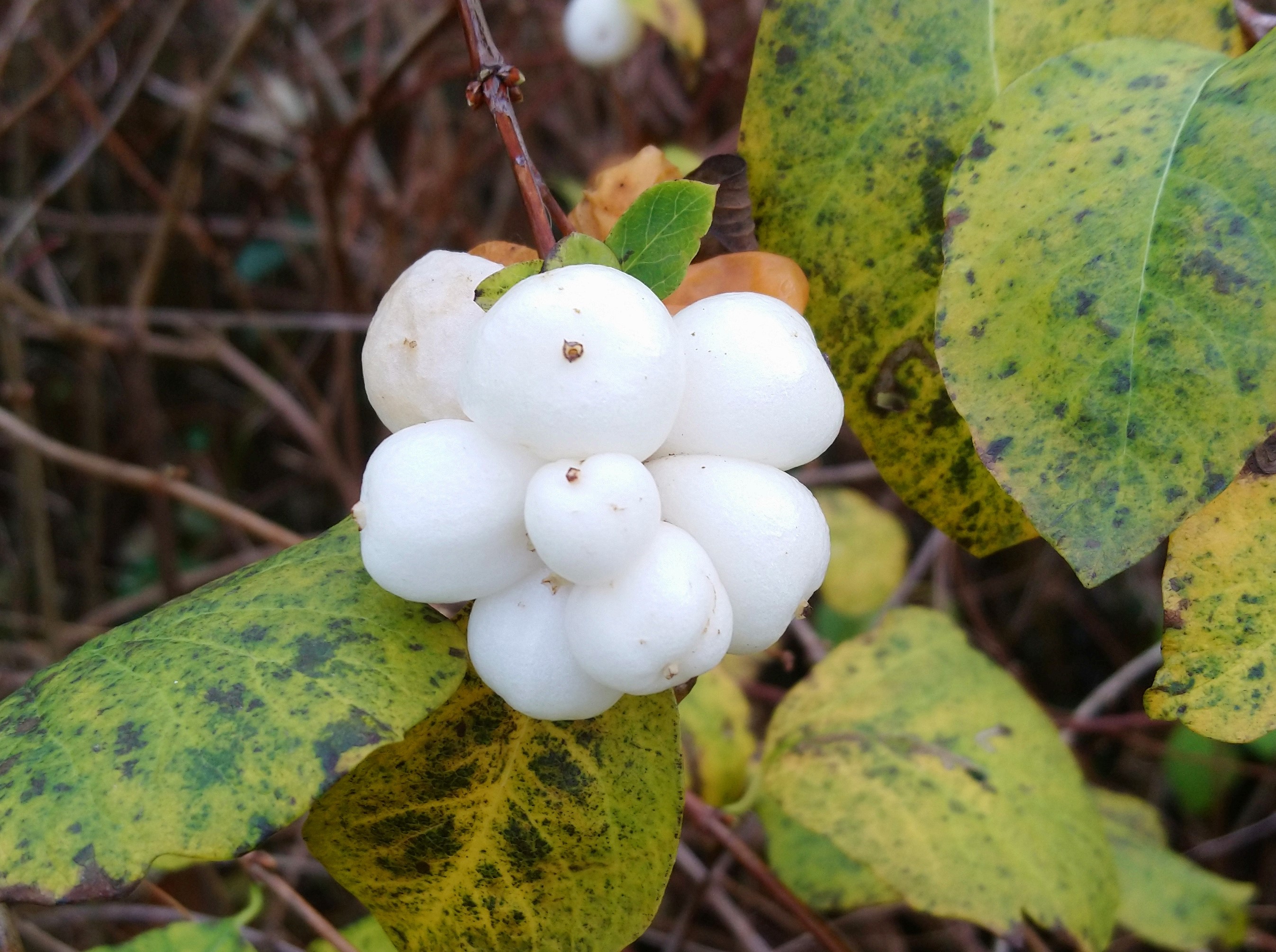
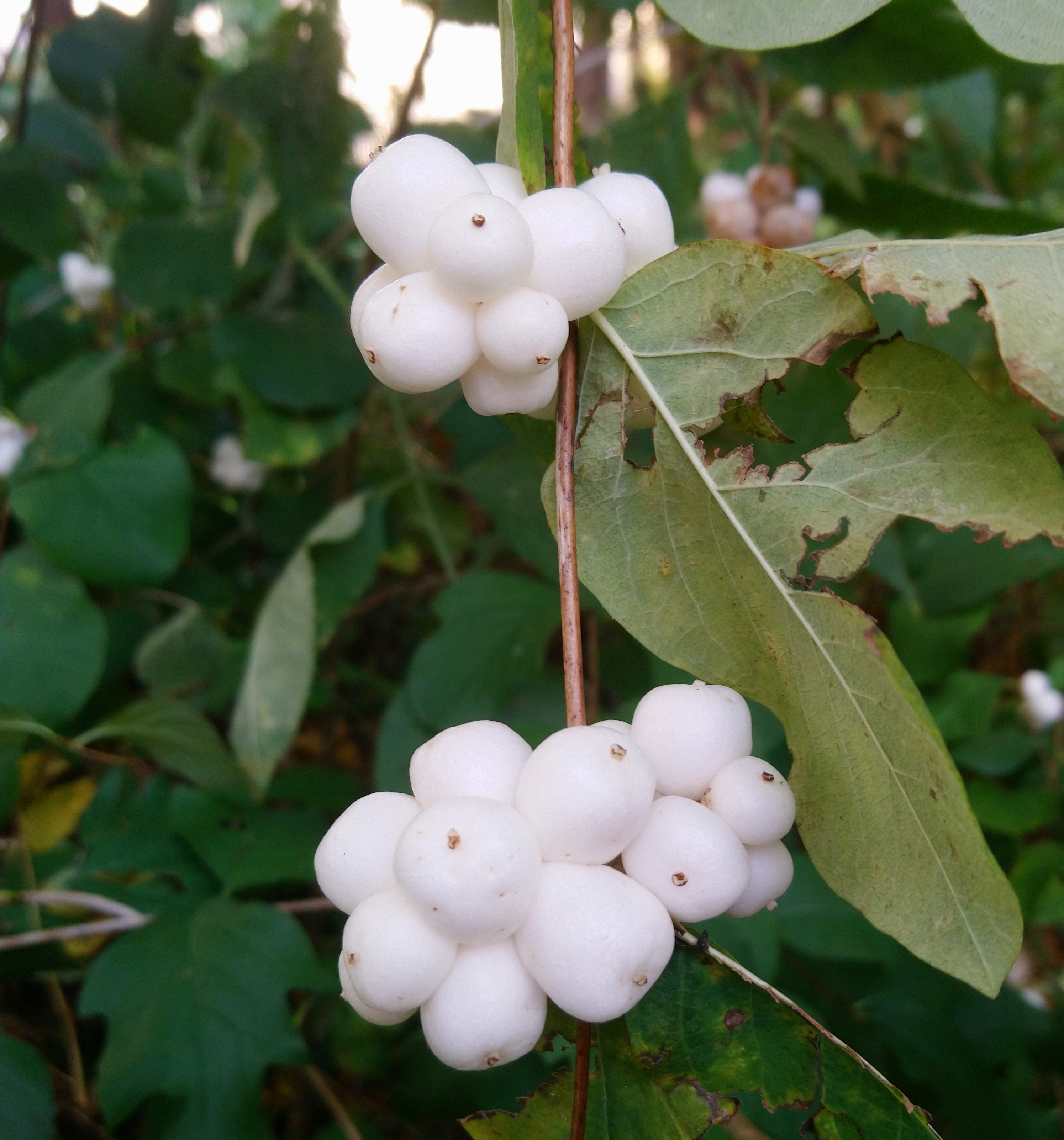
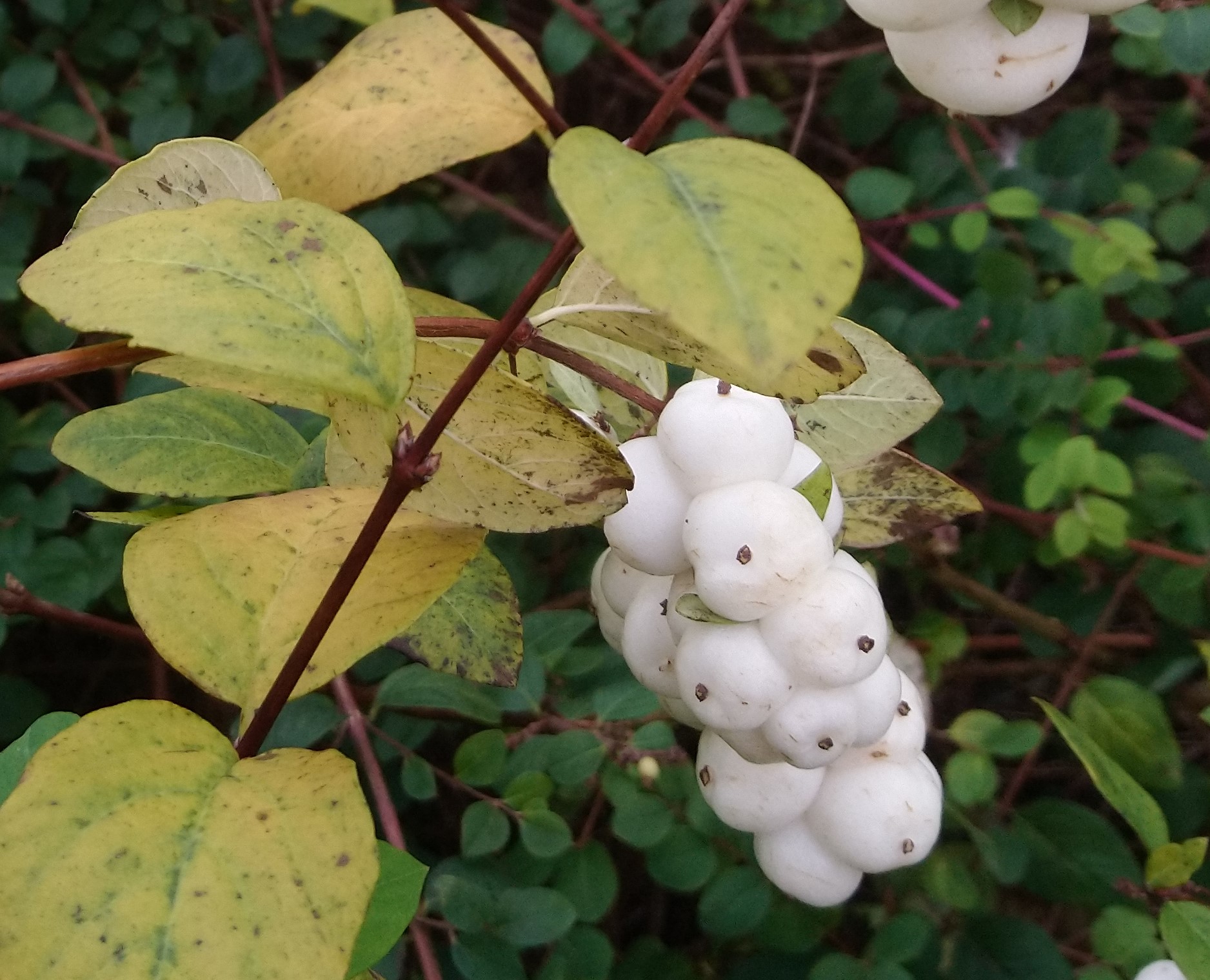

The plants can spread by seeds, dispersed by birds eating the fruits, but mainly they spread by the rhizomes of their roots. All parts of the plant, including its fruit, are poisonous to humans.
Symphoricarpos orbiculatus produces greenish-white flowers tinged with purple and its fruits vary from pink to purple. Otherwise, it resembles the Snowberry.





Habitat and use
Symphoricarpos alba is native to Canada and north-western USA.
It has been used traditional by native Americans as medicine and soap and to make arrow shafts.
Symphoricarpos orbiculatus has a more Eastern natural distribution and extend to Mexico.
In Britain both species are widely used in parks and gardens as an ornamental hedge. Cultivars are available including Symphoricarpos hybrids.
Other Notes
They are not berries. They are drupes. I won’t go into the botanical semantics, which we have met previously.
See also
The closest relative of Symphoricarpos come from the genus [213] Honeysuckle.
